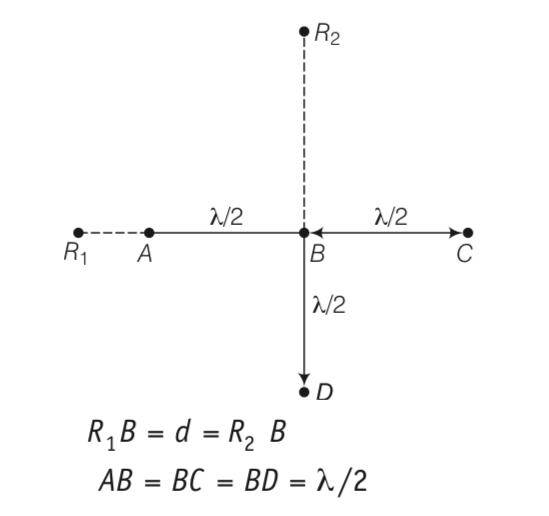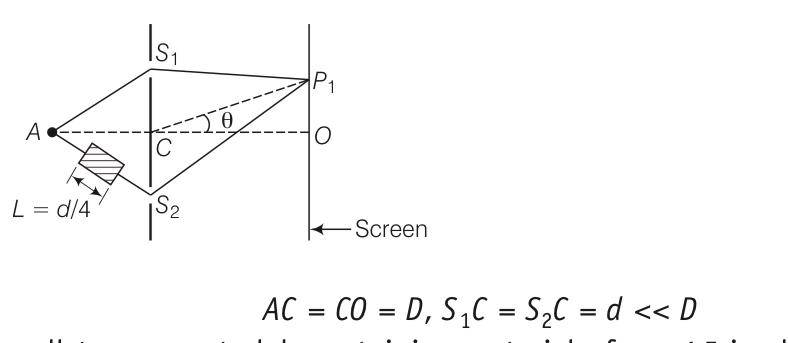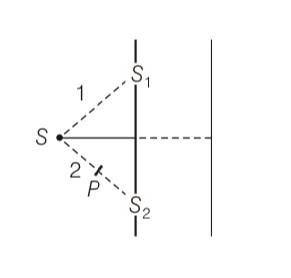Wave Optics
Get insights from 88 questions on Wave Optics, answered by students, alumni, and experts. You may also ask and answer any question you like about Wave Optics
Follow Ask QuestionQuestions
Discussions
Active Users
Followers
New answer posted
5 months agoContributor-Level 10
This is a Long Answer Type Questions as classified in NCERT Exemplar
Explanation-consider the disturbance at the receiver R1 which is at a distance d from B
YA= acos(wt) and path difference is hence phase difference is .
Thus the wave R1 because of B
YB= acos(wt- )= - acoswt here path difference is and hence phase difference is
Thus R1 because of C
Yc= acos(wt-2 )= acoswt
(i)let the signal picked up at R2 from B be YB= a1cos(wt)
The path difference between signal at D and that B is
YD= -a1cos(wt)
The path difference between signal at A and that atB is
-d = d( -d =
therefore path difference os 0
A=a1co
New answer posted
5 months agoContributor-Level 10
This is a Long Answer Type Questions as classified in NCERT Exemplar
Explanation- as the refractive index of the class , the path difference will be calculated as =2dsin +( )L
For principal maxima ,(path difference is zero)
2dsin 0+( )L=0
Sin 0= - =
Sin 0=-1/16
OP=Dtan 0= Dsin 0=-D/16
For pat h difference
2dsin 1+0.5L=
Sin 1= =
= = 1/4 -1/16
So two possible values and- =
New answer posted
5 months agoContributor-Level 10
This is a Long Answer Type Questions as classified in NCERT Exemplar
Explanation- when polariser is not used
A=Aperp+A
letA1= asinwt and A2=asin(wt+ )
now superposition principle for perpendicular polariser
AR= asinwt+ asin(wt+ )
AR=a(2cos sin(wt+ ))
AR=2acos sin(wt+ )
This eqn is also same for parallel polariser
AR=2acos sin(wt+ )
And we know that intensity is directly proportional to square of amplitude
(AR)2= (Aperp)2+(A)2
So resultant intensity is
I=4(a)2cos2 dt + 4(a)2cos2 dt
I= 8(a)2cos2 (1/2) &nb
New answer posted
6 months agoContributor-Level 10
10.21 Consider that a single slit of width is divided in to smaller slits.
Therefore width of each slit,
Angle of diffraction is given by the relation,
=
Now, each of these infinitesimally small slit sends zero intensity in the direction of Ø.
Hence, the combination of these slits will give zero intensity.
New answer posted
6 months agoContributor-Level 10
10.20 Weak radar signals sent by a low flying aircraft can interfere with the TV signal received by the antenna. Hence, TV signal may get distorted, resulting in shaking of picture on the TV.
This is because superposition follows from the linear character of a differential equation that governs wave motion. If and are the solutions of the second order wave equation, then any linear combination of and will also be the solution of the wave equation.
New answer posted
6 months agoContributor-Level 10
10.19 Wavelength of the light beam, = 500 nm = 500 m
Distance of the screen from the slit, D = 1 m
Distance of the first minimum from the centre of the screen, x = 2.5 mm = 2.5 m
Let the width of the slit be = d
From the equation
we get d =
= 2 m = 0.2 mm
Hence, the width of the slot is 0.2 mm
New answer posted
6 months agoContributor-Level 10
10.18 Distance between the towers, d = 40 km
Height of the line joining the hills, h = 50 m
Thus, the radial spread of the radio wave should not exceed 40 km
Since the hill is located halfway between the towers,
Fresnel's distance = = 20 km = 2
Aperture can be taken as a = h = 50 m
Fresnel's distance is given by the relation,
= or
= = 0.125 m = 12.5 cm
Therefore, the wavelength of the radio wave is 12.5 cm
New answer posted
6 months agoContributor-Level 10
10.17 If the width of the slit is made double the original width, then the size of the central diffraction band reduces to half and the intensity increases up to four times.
The interference pattern in a double-slit experiment is modulated by diffraction from each slit. The pattern is the result of the interference of the diffracted wave from each slit.
This is because light waves are diffracted from the edge of the circular obstacle, which interferes constructively at the centre of the shadow. This constructive interference produces a bright spot.
Bending of waves by obstacles by a large angle is possible when the size of the obstacle is
New answer posted
6 months agoContributor-Level 10
10.16 Wavelength of the light used, 6000 nm = 600 m
Angular width of the fringe, = 0.1 rad
Angular width of a fringe is related to slit spacing (d) as
d = = = 3.44 m
New answer posted
6 months agoContributor-Level 10
10.15 Sound waves can propagate only through a medium. The two given situations are not scientifically identical because the motion of an observer relative to a medium is different in the two situations. Hence, the Doppler formulas for the two situations cannot be the same.
In case of light waves, sound can travel in a vacuum. In a vacuum, the above two cases are identical because the speed of light is independent of the motion of the observer and the notion of the source. When light travels in a medium, the above two cases are not identical because the speed of light depends on the wavelength of the medium.
Taking an Exam? Selecting a College?
Get authentic answers from experts, students and alumni that you won't find anywhere else
Sign Up on ShikshaOn Shiksha, get access to
- 65k Colleges
- 1.2k Exams
- 681k Reviews
- 1800k Answers



